Astrophotography by Stealth, from looking up at the night sky, to hanging a picture on the wall which takes your breath away.
This is part one.
Hello and welcome, I’m Brian Hoffman, some of you may remember me from the chaotic interview Allison and I shared about solar energy a while back. Well, today I am going to catch you up on my adventures in Photography. Specifically my journey into astrophotography.
I started out getting ready for the total eclipse in ’24 by getting a new camera in ’23 and I have taken it way past that now. I’m addicted to Photography including staying up at night, in the winter, to take amazing astrophotography shots.
As a young man, I got to go to a planetarium. I was hooked. Nearly everything we can see in the night sky is in our Milky Way Galaxy. Andromeda is the only other galaxy we can see with the naked eye.
After that experience, I bought a small telescope and started peering out into space. The red spot on Jupiter, yep, saw that. The rings of Saturn, check. Mars and its ice caps — saw them too. What I couldn’t do was stare at anything because that telescope did not come with a tracker, it was the 70’s.
As I would be looking at an object, the earth would predictably turn requiring me to adjust my telescope time and time again. I got very good at adjusting the telescope’s position as I viewed but I missed part of the grandeur. However, I did have a window on the universe and that was good enough back then.
Fast forward a few decades, as I am getting closer to retirement and the itch has returned. It all started back in ’17 when a total eclipse was passing over my friend’s house in Tennessee. It was an experience shared with friends and family.
Truth be told, I have seen several eclipses both partial and total in my lifetime. I have been extremely fortunate to have been able to be in the right place at the right time. This time was different, I wanted to capture a really awesome picture.
We had several cameras at the ready. We had a white sheet spread out to see the “snakes”, and we had a video camera ready to record during the eclipse as well.
My son took several really nice pictures and was moved to emotion during the event. That part was awesome. However, I didn’t do as well, I was in training for the 777 and I didn’t have time to learn a new camera.
I got a few pictures, but truthfully, I didn’t have a good grasp of my friend’s camera so I didn’t get a very good picture, It is one of the reasons I tasked myself to do better next time.
Turns out, the next total solar eclipse was going to pass right over our farm in ‘24. I had a few years, but I was determined to be ready to take a wall hanging worthy picture.
In the summer of ’23, I asked a friend, Amos from DNTS, about cameras. He is extremely knowledgeable and helpful. He pointed me in the right direction. A Canon EOS R8 full-frame camera.
My price range was unknown, Amos talked with me about the pluses and minuses of several types of cameras, and at $1500, the R8 seemed right. Lenses were another thing. Canon RF cameras can take all sizes and price ranges of lenses. The “L” series is their professional line of lenses. For another $1200 I bought a 70-200 MM L series lens.
It was the F4 version, Amos said unless I was shooting sports indoors, the F4 version was the better value for me. It would not be my only lens. I practiced. Balloon Fest in Albuquerque was going to have an Annular Eclipse pass directly overhead, so my wife and I planned to attend and take pictures of it all.
I also knew I would need a solar filter for the eclipse pictures. More research would be on my list of things to do. I went with the Hoya Pro ND 100000 filter. Buy once, cry once. It wasn’t cheap, it was around $300 but it was one of the best solar filters available and Amos approved.
I got my money’s worth out of that filter way before the eclipse, taking sunspot pictures. The best part about having a solar filter is we are in a Solar Maximum period right now and I have pictures of the sun with over 35 sunspots visible.
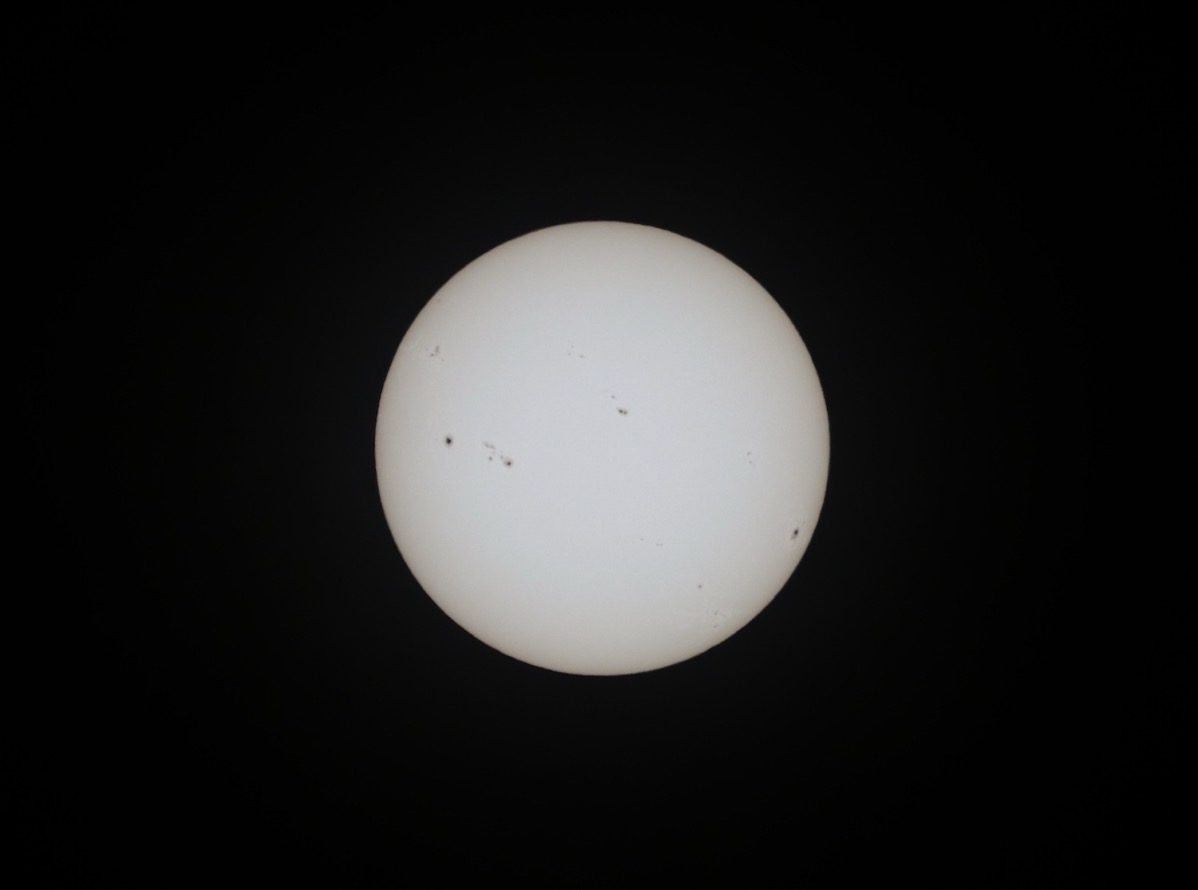
The R8 is a very versatile camera. It was the right pick.
At Balloon Fest ’24 I got some great pictures of balloons and the eclipse. I used Preview on my Mac to edit them slightly. Turns out it does a very nice job natively on my Mac. Best of all it’s free, but it does have its limits.
Amos said I took several really nice pictures. I was happy! I leveled up.
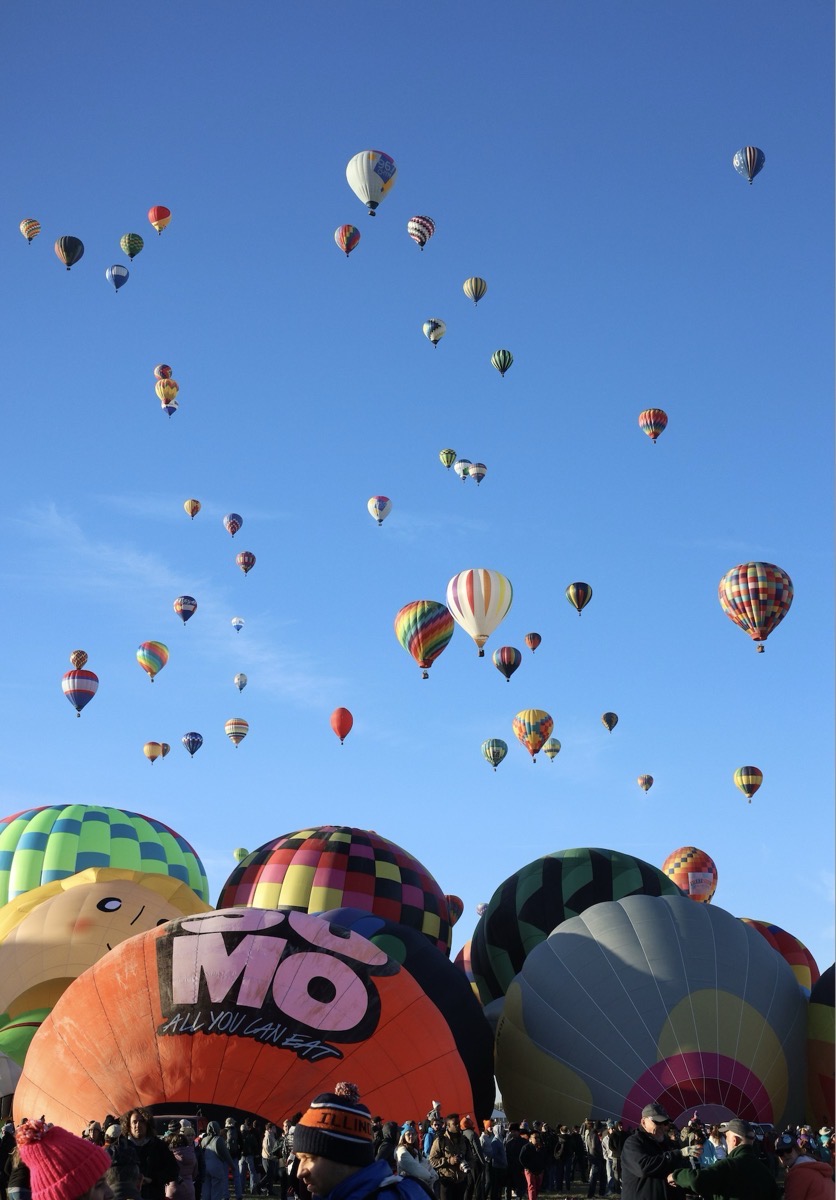
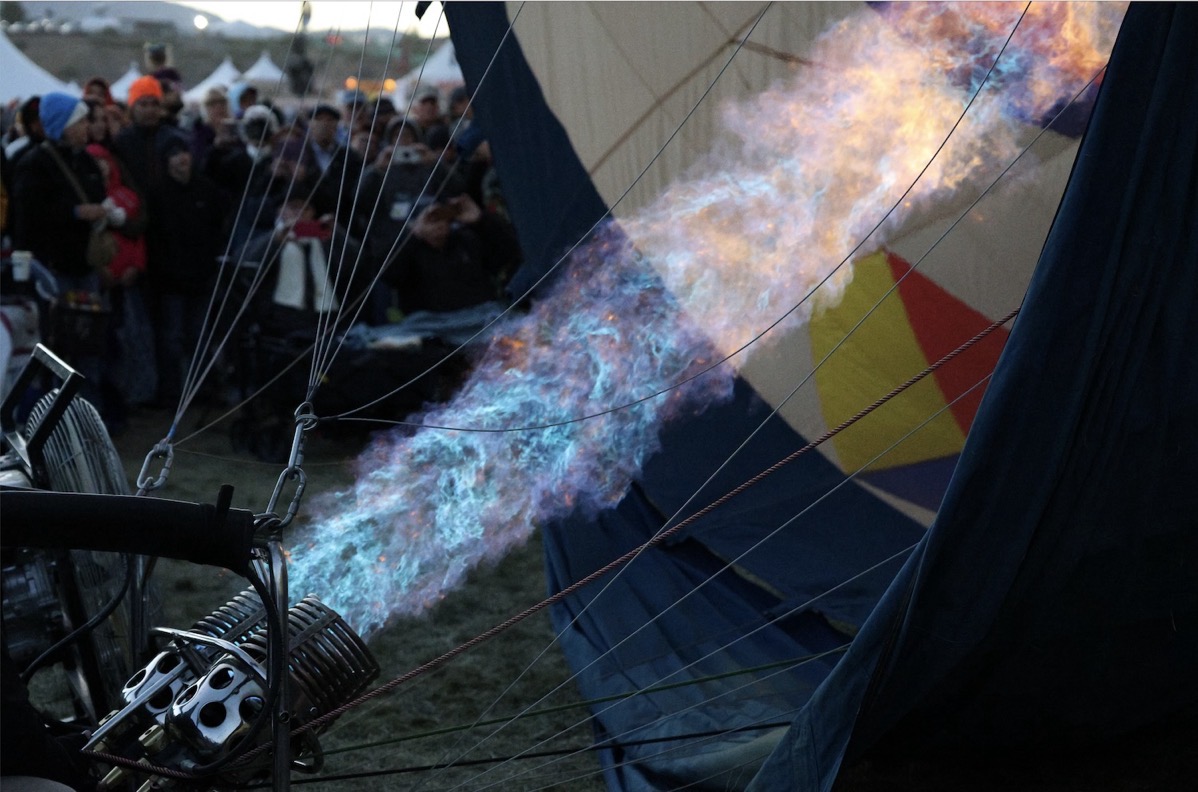
I then thought, what else can I take pictures of in the night sky? I pointed my tripod-mounted camera toward the Milky Way edge on, and I was further hooked.
I then needed to edit the pictures a bit to enhance them, after all, I am no expert. Also, I wanted to take longer exposures, it was time for a simple tracker.
Here is one of those inflection points, do I go big and spend a lot of money once, or do I buy a more modest tracker and see if it was for me? I went modest, $350 later, a big box online store delivered a Sky Watcher to my doorstep.
I have a lot of time constraints and I was unsure how often I would be able to get outside and take night sky shots so the more modest tracker seemed right. I got to work! Level up complete. But again, editing loomed.
My brother-in-law takes a lot of pictures and uses Lightroom. He was kind enough to edit a few of my pictures from time to time. I knew then I needed to be able to edit my pictures with something more than Preview. What to use. Lightroom is the go-to software. But was there something else?
I then pointed my camera at Orion. The colors danced and amazed me. There was no turning back now. I was all in.
Teaser: On the next edition: The eclipse is just weeks away, Do I have everything accounted for? Have I forgotten anything? Will the weather cooperate? Will I capture that one shot that takes your breath away? Stay tuned. Also, there is one photo I am going to call “What the heck is it?” Add your guesses in the comments, and I will reveal the answer the next time we meet. Hint: it is a real picture, and I took it.
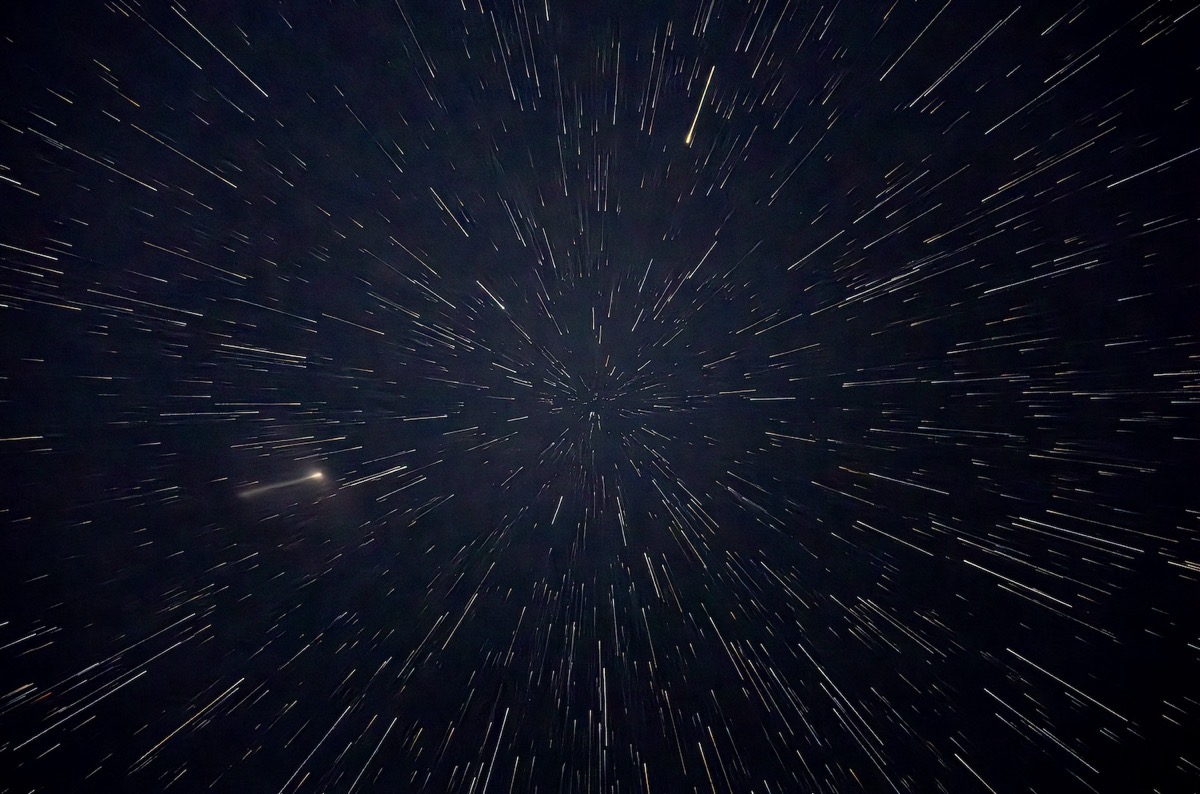
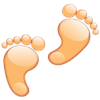
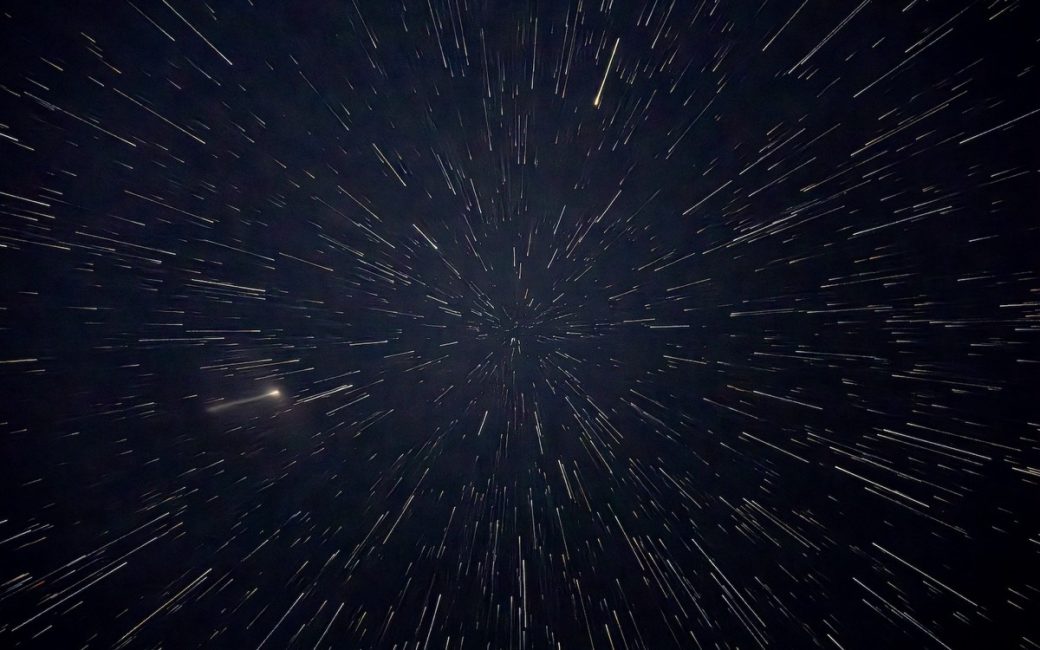
Those are great photos, Brian!
Let me guess how you did the last one. Although it looks like you took the photo sitting on the bridge of the Millennium Falcon and going to hyperdrive, I think that’s not it. Instead, I suspect you were stationary on planet Earth photographing the stars on a clear night. I further suspect you took a relatively long exposure of the stars as you zoomed in (or out) the camera lens.
If that’s it, I’m impressed since the stars are well-focused and show no shake or jitter as you zoomed in. The stars’ paths are perfectly radial. Did zoom manually or did the camera perform the zoom using a hands-free automated mode?
No millennium falcons were used.